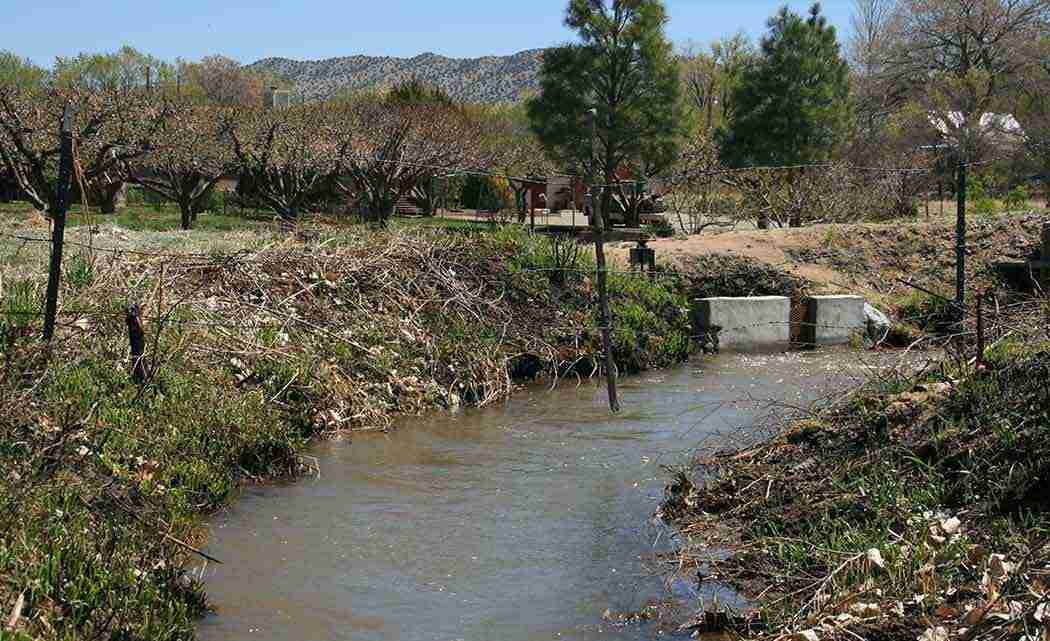By SUSAN MONTOYA BRYAN
ALBUQUERUQUE, N.M. (AP) _ Some of the hand-built communal canals that have been funneling water to farmers and ranchers in New Mexico for centuries will be getting an infusion of more than $1 million as managers look to combat the effects of drought.
Federal officials visited a northern New Mexican village on Thursday to tour what they described as the oldest acequia in the nation. They heard from locals about what it takes to keep the traditional irrigation canal flowing and how acequias around the state can be improved.
Jason Weller, chief of the Natural Resources Conservation Service, said the idea is to make acequias more efficient so they can continue to deliver water to the communities that depend on them for raising livestock and growing crops.
“It’s really the process here that’s significant,” Weller told The Associated Press. “Instead of the federal government coming in and saying what we want to do in a community, it’s asking the community what it wants to get done.”
He said through previous engineering work, several acequias districts are ready to begin construction. The proposed work ranges from replacing diversion structures made of rocks and logs to installing pipelines along stretches of the canals that are too sandy to maintain.
The earliest acequia dates to 1597. The structures were introduced to the region by Spanish settlers, and they’re still celebrated by those working to keep Hispanic and indigenous traditions alive.
Paula Garcia, executive director of the New Mexico Acequia Association, said her membership is excited about the possibilities because the government’s new regional conservation partnership program streamlines the process for applying for funding to keep up the irrigation systems.
Under the program, federal money is leveraged to attract more dollars from state and local governments, co-ops, nonprofits and private landowners to address water quality issues and dwindling supplies.
In all, the acequia revitalization project and three others will share more than $9.5 million in federal funds. Partnering groups are expected to contribute more than $25 million.
The federal funding comes from the farm bill. Garcia said her group initially tried to have the legislation amended to include the word “acequia,” but that was a challenge because few people understood what it meant. Now, acequia districts are included with other irrigation districts.
Acequias draw from streams and rivers. With water levels dropping because of persistent drought, officials pointed to one acequia that has been without water for three years. Others have been forced to water only a quarter of their agricultural lands.
Garcia said one dry year compounds on the next, making it tough for farmers.
“It’s also coming at a time when there’s renewed interest in agriculture and a renewed interested in locally grown food, so there’s a lot of pressure to allocate very scarce water supplies,” she said.
Weller ticked off a list of states across the West that have been grappling with drought, saying wells across the region are drying up and conflicts are mounting over surface water rights. His agency is working with landowners and communities to find solutions.
“How do we make due with less water, how do we be as efficient as possible with the water we do have, or how do we protect the quality of water? Those things are crucial for a lot of these communities,” he said.













No Comment